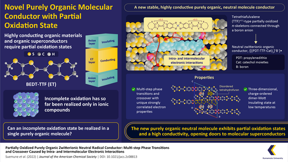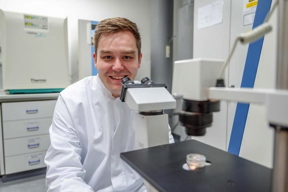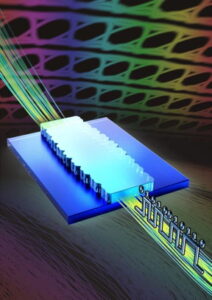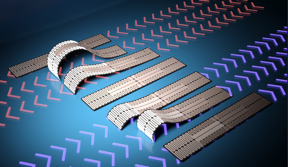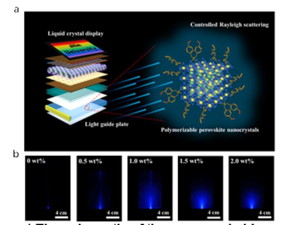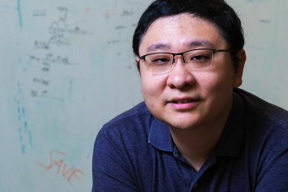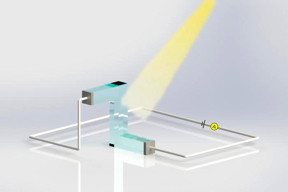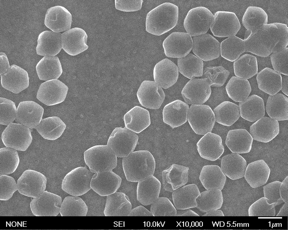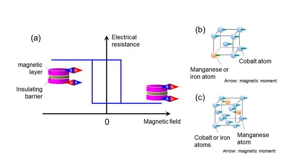Home > Press > A solid understanding of liquid-solid interaction: Pitt researcher receives $300K from the NSF to explore motion of viscous liquids interacting with solid bodies
 |
| G. Paolo Galdi, Distinguished Professor of Mechanical Engineering & Materials Science at the University of Pittsburgh CREDIT University of Pittsburgh |
Abstract:
The same principles that led to the Tacoma Narrows Bridge collapse in 1940 could someday allow doctors to direct microrobots through the bloodstream to deliver medicine precisely where needed.
A solid understanding of liquid-solid interaction: Pitt researcher receives $300K from the NSF to explore motion of viscous liquids interacting with solid bodies
Pittsburgh, PA | Posted on June 30th, 2023The interaction between viscous liquid and solid bodies has become a main focus of applied research, and with good reason. G. Paolo Galdi, distinguished professor of mechanical engineering and materials science at the University of Pittsburgh Swanson School of Engineering, is working to harness the potential of this interaction for wide-ranging applications in biomedical engineering, micro- and nano-technological equipment design, and suspension bridge construction. The National Science Foundation (NSF) recently awarded Galdi $299,792 for this work.
Galdi's project investigates two specific aspects within this field. The first explores how a solid object moves when it vibrates in a viscous liquid, especially when the vibration is caused by an oscillating mass inside the object. This work has practical applications in biomedical engineering and designing small-scale equipment.
“A microrobot with a vibrating motor could be used to deliver medicine directly to where it’s needed in the body, as long as the robot’s movement could be precisely controlled,” explained Galdi. “An internal, vibrating motor would be much safer than other means of propelling something within the veins, but the movement from a vibrating motor is much more difficult to predict and control.”
Galdi’s research aims to discover how changing the frequency of vibration relates to the net motion of the robot, and how changing the shape of the robot and the speed of the vibration might direct its path.
The second aspect of Galdi's research examines how the flow of a viscous liquid can affect or even produce the oscillation of an elastic structure. Understanding this phenomenon is crucial for studying the stability of suspension bridges. By investigating these questions, Galdi hopes to contribute to preventing disasters like the Tacoma Narrows Bridge collapse, a suspension bridge that famously collapsed soon after it was built in 1940 because of oscillations caused by wind.
“When wind hits a suspension bridge, it can create oscillations that can provoke movement of the structure and, sometimes, cause it to fail. This failure isn’t as simple as it appears,” explained Galdi. “I’m approaching this problem from a rigorous mathematical perspective so that, hopefully, we can prevent these catastrophes in the future.”
The NSF funding not only recognizes the importance of Galdi's research but also creates opportunities for graduate students. The grant will provide valuable research experience to ECE PhD Candidate Marc Karakouzian. Two undergraduate students—Benjamin Carr and Oscar Gerber—will also contribute to the work.
The three-year project is set to begin on July 1.
####
For more information, please click here
Contacts:
Maggie Lindenberg
University of Pittsburgh
Copyright © University of Pittsburgh
If you have a comment, please Contact us.Issuers of news releases, not 7th Wave, Inc. or Nanotechnology Now, are solely responsible for the accuracy of the content.
| Related News Press |
News and information
![]() Electron collider on a chip June 30th, 2023
Electron collider on a chip June 30th, 2023
![]() Discovering features of band topology in amorphous thin films June 30th, 2023
Discovering features of band topology in amorphous thin films June 30th, 2023
Robotics
![]() Liquid metal sticks to surfaces without a binding agent June 9th, 2023
Liquid metal sticks to surfaces without a binding agent June 9th, 2023
![]() Robot caterpillar demonstrates new approach to locomotion for soft robotics March 24th, 2023
Robot caterpillar demonstrates new approach to locomotion for soft robotics March 24th, 2023
![]() Nanostructured fibers can impersonate human muscles June 3rd, 2022
Nanostructured fibers can impersonate human muscles June 3rd, 2022
Possible Futures
![]() CityU awarded invention: Soft, ultrathin photonic material cools down wearable electronic devices June 30th, 2023
CityU awarded invention: Soft, ultrathin photonic material cools down wearable electronic devices June 30th, 2023
![]() The picture of health: Virginia Tech researchers enhance bioimaging and sensing with quantum photonics June 30th, 2023
The picture of health: Virginia Tech researchers enhance bioimaging and sensing with quantum photonics June 30th, 2023
Nanomedicine
![]() The picture of health: Virginia Tech researchers enhance bioimaging and sensing with quantum photonics June 30th, 2023
The picture of health: Virginia Tech researchers enhance bioimaging and sensing with quantum photonics June 30th, 2023
![]() Advances in nanotechnology application in biosafety materials A crucial response to COVID-19 pandemic June 9th, 2023
Advances in nanotechnology application in biosafety materials A crucial response to COVID-19 pandemic June 9th, 2023
Discoveries
![]() CityU awarded invention: Soft, ultrathin photonic material cools down wearable electronic devices June 30th, 2023
CityU awarded invention: Soft, ultrathin photonic material cools down wearable electronic devices June 30th, 2023
![]() The picture of health: Virginia Tech researchers enhance bioimaging and sensing with quantum photonics June 30th, 2023
The picture of health: Virginia Tech researchers enhance bioimaging and sensing with quantum photonics June 30th, 2023
Announcements
![]() New single-photon Raman lidar can monitor for underwater oil leaks: System could be used aboard underwater vehicles for many applications June 30th, 2023
New single-photon Raman lidar can monitor for underwater oil leaks: System could be used aboard underwater vehicles for many applications June 30th, 2023
![]() CityU awarded invention: Soft, ultrathin photonic material cools down wearable electronic devices June 30th, 2023
CityU awarded invention: Soft, ultrathin photonic material cools down wearable electronic devices June 30th, 2023
Nanobiotechnology
![]() Nanonitrator: novel enhancer of inorganic nitrate protective effects, predicated on swarm learning approach May 12th, 2023
Nanonitrator: novel enhancer of inorganic nitrate protective effects, predicated on swarm learning approach May 12th, 2023
![]() Nanobiotechnology: How Nanomaterials Can Solve Biological and Medical Problems April 14th, 2023
Nanobiotechnology: How Nanomaterials Can Solve Biological and Medical Problems April 14th, 2023
![]() Implantable device shrinks pancreatic tumors: Taming pancreatic cancer with intratumoral immunotherapy April 14th, 2023
Implantable device shrinks pancreatic tumors: Taming pancreatic cancer with intratumoral immunotherapy April 14th, 2023
- SEO Powered Content & PR Distribution. Get Amplified Today.
- PlatoData.Network Vertical Generative Ai. Empower Yourself. Access Here.
- PlatoAiStream. Web3 Intelligence. Knowledge Amplified. Access Here.
- PlatoESG. Automotive / EVs, Carbon, CleanTech, Energy, Environment, Solar, Waste Management. Access Here.
- BlockOffsets. Modernizing Environmental Offset Ownership. Access Here.
- Source: http://www.nanotech-now.com/news.cgi?story_id=57358
- :has
- :is
- :not
- :where
- $UP
- 1
- 10
- 27
- 30th
- 3rd
- 7th
- 8th
- 9th
- a
- accuracy
- affect
- After
- aims
- allow
- also
- an
- and
- Application
- applications
- applied
- approach
- approaching
- April
- ARE
- AS
- aspect
- aspects
- At
- awarded
- BAND
- BE
- because
- become
- begin
- between
- binding
- biomedical
- bodies
- body
- breakthrough
- BRIDGE
- bridges
- built
- built-in
- but
- by
- CAN
- Cancer
- candidate
- catastrophes
- Cause
- caused
- cellular
- Center
- CGI
- changing
- characteristic
- chip
- click
- Collapse
- collapsed
- COM
- comment
- Communications
- Compensation
- complex
- computing
- Confirm
- construction
- content
- contribute
- control
- controlled
- could
- COVID-19
- create
- creates
- credit
- crucial
- data
- deliver
- demonstrates
- Design
- designing
- developed
- device
- difficult
- dimensions
- direct
- directly
- disasters
- discover
- Dispersion
- Distinguished
- Doctors
- down
- Edge
- effects
- Electronic
- end
- energy
- Engineering
- enhance
- equipment
- Errors
- especially
- essential
- Ether (ETH)
- Even
- Examines
- existing
- experience
- Explain
- explained
- explore
- explores
- FAIL
- Failure
- famously
- faster
- Features
- fibers
- field
- First
- flow
- Focus
- For
- Foundation
- Frequency
- from
- functions
- funding
- future
- gif
- good
- graduate
- grant
- harness
- Have
- Health
- help
- Hits
- Hopefully
- hopes
- How
- http
- HTTPS
- human
- Idle
- if
- importance
- in
- Inc.
- information
- inside
- insight
- inspired
- interacting
- interaction
- internal
- Internet
- into
- Invention
- investigates
- issue
- IT
- ITS
- July
- june
- Leaks
- learning
- Led
- less
- levels
- lidar
- like
- links
- Liquid
- Long
- lowering
- machine
- Main
- many
- March
- Mass
- material
- materials
- mathematical
- May..
- means
- mechanical
- mechanical engineering
- medical
- medicine
- metal
- might
- molecular
- Monitor
- more
- motion
- Motor
- movement
- moves
- much
- Nanomaterials
- nanotechnology
- National
- National Science
- Natural
- Nature
- needed
- net
- New
- news
- no
- novel
- now
- NSF
- object
- of
- Oil
- on
- only
- opportunities
- or
- orders
- Other
- Paolo
- Paper
- path
- Paving
- perspective
- phenomenon
- PHP
- picture
- pittsburgh
- plato
- Plato Data Intelligence
- PlatoData
- please
- Post
- posted
- potential
- power
- Practical
- Practical Applications
- precisely
- predict
- press
- Press Release
- prevent
- preventing
- principles
- Problem
- produce
- Professor
- project
- propelling
- Protective
- Protein
- provide
- provides
- Quantum
- quantum computing
- Questions
- reason
- receives
- recently
- recognizes
- Regulate
- release
- Releases
- research
- researcher
- researchers
- response
- responsible
- return
- Reveals
- rigorous
- robot
- s
- safer
- same
- Save
- scalable
- School
- School of Engineering
- Science
- scientists
- Search
- Second
- set
- Shape
- Share
- significant
- significantly
- Simple
- So
- Soft
- solely
- solid
- SOLVE
- someday
- something
- Soon
- special
- specific
- speed
- Stability
- start
- structure
- Students
- Studying
- submit
- suspension
- Swarm
- synthetic
- system
- Tacoma
- tech
- Technology
- than
- thanks
- that
- The
- The Future
- These
- this
- Through
- to
- toward
- transformative
- two
- understanding
- underwater
- university
- us
- used
- uses
- using
- Valuable
- Vehicles
- virginia
- was
- Wave
- Way..
- we
- wearable
- when
- will
- wind
- with
- within
- without
- Work
- working
- would
- Yahoo
- you
- zephyrnet











